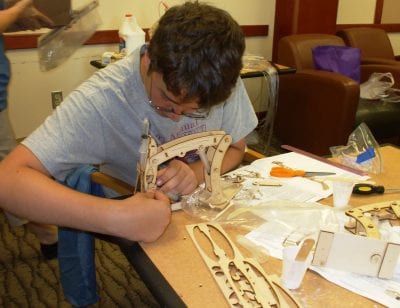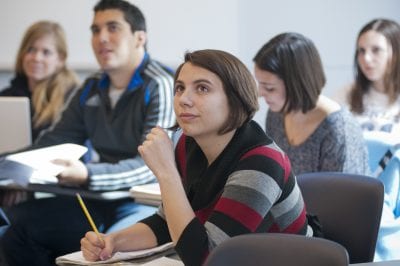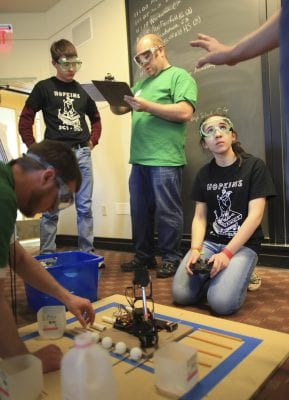 One salient feature of giftedness is students’ ability to create. This is true also for twice exceptional students whose creativity may often be overlooked for several reasons. Among these oversights is a failure to recognize creative behaviors when they don’t align to the arts, when the behavior is used to survive in an unfriendly environment, or when there is a lack of understanding of different types of creativity.
One salient feature of giftedness is students’ ability to create. This is true also for twice exceptional students whose creativity may often be overlooked for several reasons. Among these oversights is a failure to recognize creative behaviors when they don’t align to the arts, when the behavior is used to survive in an unfriendly environment, or when there is a lack of understanding of different types of creativity.
Too often creativity is aligned to productivity within the arts. We think of poets, artists, musicians, and dancers as creative and omit understanding that in every domain creativity exists. Twice exceptional learners, especially those on the Autism Spectrum, while some may be talented in the arts, demonstrate their creativity in areas like robotics, coding, science, and even writing. John was one such individual. He knew everything there was to know about the technology of cell phones. If his family, friends, and teachers experienced glitches or breakdowns with apps or voicemail, they called on John to creatively solve the problem. His ability to generate many possible hypotheses as to the cause of the problem and his talent then of systematically testing solutions made him the local hero.
For some, their creativity may help them survive within unfriendly environments. Often, twice exceptional students have a difficult time meeting school expectations. Sometimes assignments are not clear, causing anxiety and feelings of being overwhelmed, which may prevent them from completing assignments. When confronted with their lack of production, some 2e students are able to conjure up twenty reasons why they haven’t completed their homework or elaborate on a detailed excuse for misbehavior. Both of these are examples of the divergent thinking skills of fluency and elaboration. But because excuses for nonproductivity are viewed as irresponsible behavior, no one applauds the students’ creativity.
It is important to understand that there are styles of creative thinking. Robert Sternberg, an expert on intelligence and creativity, talks about thinking styles that enhance different kinds of creativity. For him, students with a legislative orientation prefer tasks and projects that seek innovation and freedom to create. They like to plan their own projects and do it their own way. Sam, whose 2e profile often results in low production, is a talented builder. He excelled at self-initiated projects. While in middle school, he created his own line of furniture. Also talented in culinary arts, he created innovative recipes and dishes in his home kitchen and later produced and marketed Sauces by Sam.
According to Sternberg, others with an executive orientation create best when there is structure, clear directions, and a vision, which allows them to create innovative solutions. At Bridges Academy, a school for twice exceptional students, many opportunities exist for creativity to be expressed. One is the participation in the Robotics First competition. Here students are challenged with building a robot according to specific criteria. Typically, the team is made up of 2e students, some of whom are on the autism spectrum while others are challenged with attention deficits and other issues. Remarkably, these cognitive differences are assets in the creation of the robot. The ADHD students often are the conceptualizers, while the students with ASD are the elaborators and problem solvers that actually get the robot to work.
Finally, there are those individuals who are more judicially oriented. For them to be creative they seek to innovate through critical analysis, synthesis, and evaluation. Consider Claire, a highly talented artist who claimed she had no social skills, but whose high intelligence and talent for evaluation inspired her to create artwork. Her constant annoyance and critical evaluation of her classmates inspired her to create a mural that metaphorically represented her classmates as prototypical monsters. In short, creativity comes in many forms. It is important to recognize this kind of thinking and provide outlets for its expression.
 One of the most important things that students with disabilities and their families need to be aware of during the transition to college is the significant change in legal rights and protections that the student will be
One of the most important things that students with disabilities and their families need to be aware of during the transition to college is the significant change in legal rights and protections that the student will be  Our recent research on 40 successful college students with Autism Spectrum Disorder (ASD) suggests successful high school learning opportunities were linked to their ability to do so well in college. Of particular interest was the importance of extracurricular activities, such as music, clubs, and sports. The majority of our sample reported their involvement in extracurricular opportunities, such as robotics, computer clubs, swim team, cross country, debate club, school newspaper, choir, tennis, and various clubs.
Our recent research on 40 successful college students with Autism Spectrum Disorder (ASD) suggests successful high school learning opportunities were linked to their ability to do so well in college. Of particular interest was the importance of extracurricular activities, such as music, clubs, and sports. The majority of our sample reported their involvement in extracurricular opportunities, such as robotics, computer clubs, swim team, cross country, debate club, school newspaper, choir, tennis, and various clubs.